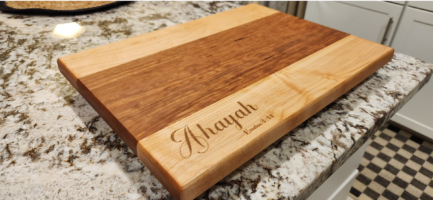Exploring the Best Hardwood Types for Cutting Boards
When considering the construction of a high-quality cutting board, the choice of hardwood plays a pivotal role. Among the popular choices in the culinary world, cherry wood, walnut, and white oak stand out for their unique properties. Each type offers advantages that enhance both durability and aesthetic appeal, making them excellent options for kitchenware.
Cherry wood is often favored for its warm tones and smooth grain. It possesses a natural resistance to bacteria, making it a hygienic choice for food preparation. Moreover, cherry wood develops a rich patina over time, enriching its color and character. This wood is less prone to deep knife marks, ensuring that the cutting surface remains visually appealing and functional even after years of use.
Walnut is another exceptional hardwood that combines beauty and strength. Its dark, rich hue provides an elegant contrast in the kitchen, and its natural oils contribute to its ability to resist moisture. Walnut’s dense composition means it is less likely to show signs of wear from knife cuts, making it an excellent long-term investment. Additionally, walnut wood is celebrated for its antibacterial properties, contributing to a safer food preparation environment.
White oak is renowned for its toughness and durability. Its open grain structure allows it to handle heavy use while preventing the accumulation of bacteria. White oak’s unique grain patterns add a distinctive touch to any kitchen, appealing to those who appreciate natural beauty. Over time, white oak darkens slightly, enhancing its character and providing an enduring charm. When selecting the right hardwood for cutting boards, it is essential to consider not only the functionality but also the visual appeal each type offers. The right choice will beautifully complement any kitchen while ensuring longevity and safety.
Customization and Longevity: Engraving and Maintenance of Hardwood Cutting Boards
Hardwood cutting boards offer a unique opportunity for personalization through engraving, which enhances both their aesthetic appeal and emotional value. The option to etch a name, date, or bespoke design transforms a standard cutting board into a cherished keepsake, making it an ideal gift for weddings, anniversaries, or housewarmings. Various techniques are available for engraving, such as laser engraving, which produces precise and intricate designs without damaging the wood structure. Additionally, hand-carved engravings add an artisanal touch, celebrating the individuality of each board and showcasing craftsmanship.
Moreover, an engraved cutting board serves not only a functional role in the kitchen but also as a decorative element in the home. Displaying such a piece can enhance the culinary space, inviting a cozy atmosphere that promotes cooking and gathering. Custom designs, ranging from simple monograms to elaborate illustrations, allow for versatility in style, appealing to various tastes and home designs.
While the aesthetic value of hardwood cutting boards can be elevated through customization, their longevity is paramount. Maintaining the integrity and beauty of these boards requires regular care and attention. Proper cleaning is the first step; after each use, boards should be washed with warm, soapy water and dried immediately to prevent moisture absorption, which can warp the wood. Furthermore, regular oiling with food-safe mineral oil helps preserve the wood’s natural luster and prevents cracks. It is advisable to apply oil monthly or whenever the wood starts to appear dry.
Storage also plays a crucial role in a cutting board’s longevity. Keeping the board in a dry, well-ventilated area away from direct sunlight can prevent warping and discoloration. By integrating these maintenance practices into your routine, a well-cared-for hardwood cutting board can remain a functional and beautiful kitchen essential for years to come.















Reviews
There are no reviews yet.